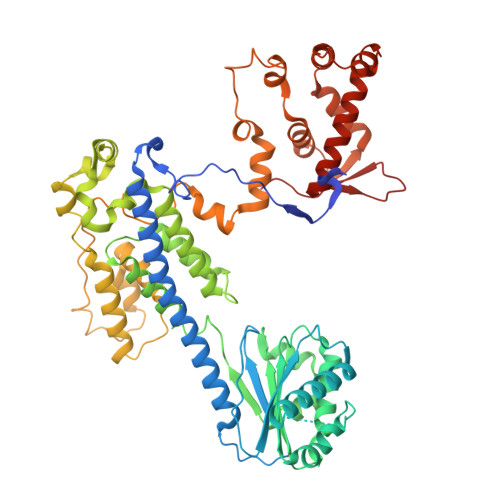DNA bending mediated by ORC is essential for replication licensing in budding yeast.
Lam, W.H., Yu, D., Zhang, Q., Lin, Y., Li, N., Li, J., Wu, Y., Zhang, Y., Gao, N., Tye, B.K., Zhai, Y., Dang, S.(2025) Proc Natl Acad Sci U S A 122: e2502277122-e2502277122
- PubMed: 40184174
- DOI: https://doi.org/10.1073/pnas.2502277122
- Primary Citation of Related Structures:
8ZP4, 8ZP5, 8ZPK - PubMed Abstract:
In eukaryotes, the origin recognition complex (ORC) promotes the assembly of minichromosome maintenance 2 to 7 complexes into a head-to-head double hexamer at origin DNA in a process known as replication licensing. In this study, we present a series of cryoelectron microscopy structures of yeast ORC mutants in complex with origin DNA. We show that Orc6, the smallest subunit of ORC, utilizes its transcription factor II B-B domain to orchestrate the sequential binding of ORC to origin DNA. In addition, Orc6 plays the role of a scaffold by stabilizing the basic patch (BP) of Orc5 for ORC to capture and bend origin DNA. Importantly, disrupting DNA bending through mutating three key residues in Orc5-BP impairs ORC's ability to promote replication initiation at two points during the pre-RC assembly process. This study dissects the multifaceted role of Orc6 in orchestrating ORC's activities on DNA and underscores the vital role of DNA bending by ORC in replication licensing.
- Division of Life Science, The Hong Kong University of Science and Technology, Hong Kong, China.
Organizational Affiliation:
























